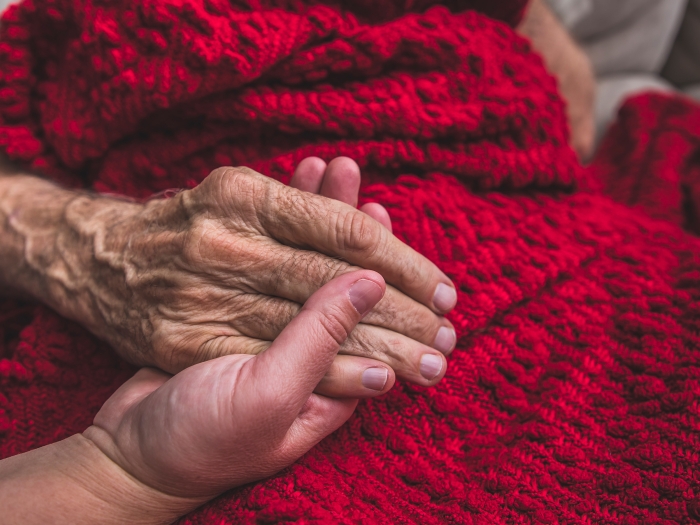Threefold difference between lowest rate of severe childbirth complications in Utah compared to highest in D.C.
5:00 PM
Author |

The risk of life-threatening maternal complications from childbirth may be higher depending on where you live, a study finds.
For Medicaid enrollees in Utah, the rate of “near miss” instances that could have led to the death of a birthing person during pregnancy or delivery was the lowest in the United States, occurring among 80 per 10,000 live births.
Meanwhile, on the other side of the country in Washington D.C., the rate of such cases was nearly three times higher – 210 per 10,000 deliveries.
The drivers for these unexpected maternal outcomes, referred to as severe maternal morbidity, also varied by race and ethnicity, according to the research in Obstetrics & Gynecology, or The Green Journal.
“Our findings suggest wide variation in rates and potential causes of severe maternal morbidity by state, and by race and ethnicity across and within states,” said lead author Lindsay Admon, M.D., M.Sc., an assistant professor of obstetrics and gynecology at the University of Michigan Medical School and obstetrician-gynecologist at U-M Health Von Voigtlander Women’s Hospital.“This data highlights states that have the greatest burden of severe maternal complications and may help guide and tailor interventions aimed at reducing morbidity among those at highest risk.”
Researchers analyzed national data from 4.8 million live births among Medicaid enrollees (average age of 27) between 2016 and 2018, tracking unanticipated outcomes resulting in significant short- or long-term health consequences within six weeks of delivery.
Overall, 146 out of every 10,000 live births among Medicaid enrollees in the U.S. involved serious complications, according to the study.
Differences in maternal morbidity rates across states and by race and ethnicity
The findings come on the heels of alarming data from the Centers for Disease Control and Prevention finding a sharp rise in maternal deaths during the pandemic.
Medicaid finances slightly more than two in five births in the U.S. and a disproportionate number of births to individuals with the greatest risk of experiencing severe maternal complications and death, including Black and Indigenous populations, rural residents, and those living in lower income ZIP codes.
When we look at maternal health across populations within states, we can see that some communities are performing much better than others with respect to life-threatening labor and delivery outcomes.”
- Lindsay Admon, M.D., M.Sc.
More than two thirds of individuals with live births in the study were eligible for Medicaid for income while a smaller proportion qualified due to pregnancy.
“Medicaid enrollees are at the highest risk of maternal morbidity and mortality,” Admon said. “Many states are pursuing clinical interventions and health policies designed to address maternal health inequities through Medicaid programs. But until now, we haven’t had a big picture view of health outcomes on a geographic and demographic level to inform these decisions.”
The five states with the highest rates of severe maternal morbidity included D.C., California, Nevada, New Jersey, and New York. Meanwhile, rates for Utah, Maryland, Rhode Island, Nebraska, and New Hampshire fell in the bottom tenth percentile.
But state-by-state outcomes differed depending on a person’s racial or ethnic group. Among deliveries to non-Hispanic Black individuals, the three states with the highest rates of severe maternal morbidity were Alaska, New York, and New Jersey while states with the lowest rates were in New Mexico, North Dakota, and Utah.
For white individuals, California, West Virginia, and South Carolina ranked highest for severe adverse maternal health outcomes while the lowest rates were found in Utah, North Dakota and Maine.
Drivers of maternal morbidity
The leading factor linked with severe maternal morbidity among all Medicaid enrollees was eclampsia, a rare but life-threatening complication from high blood pressure during pregnancy that can cause seizures. But conditions varied across states and by race and ethnicity within states.
In Texas, for example, eclampsia was the top driver of potentially fatal maternal outcomes overall among people covered by Medicaid. However, non-Hispanic Black Texans experienced acute heart failure as the leading driver, and white Texans experienced sepsis as the leading driver of maternal health outcomes.
“Previous research suggests that pre-existing chronic conditions like obesity, diabetes, and mental health conditions are linked to greater risk for adverse maternal health outcomes,” Admon said. “We need to focus on interventions that improve the overall health of our reproductive-aged population and identify clinical, societal, and structural barriers that may prevent individuals from achieving optimal health before pregnancy.”
Since maternal mortality is a relatively rare event, Admon adds, studying severe maternal morbidity to understand “near miss” events that could have resulted in an in-hospital maternal death may help efforts to mitigate the most adverse maternal health outcomes.
“When we look at maternal health across populations within states, we can see that some communities are performing much better than others with respect to life-threatening labor and delivery outcomes,” Admon said. “This added nuance will be helpful to clinicians, policymakers and advocacy groups who are committed to strategies to improve maternal health across the country.”
This study was selected as the “editor’s pick” for the April 2023 edition of The Green Journal.
Additional authors include Samantha Auty, M.S., Jamie Daw, Ph.D., Katy Kozhimannil, Ph.D., M.P.A., Eugene Declerq, Na Wang, Ph.D., and Sarah Gordon, Ph.D.
Study cited: “State Variation in Severe Maternal Morbidity Among Medicaid Enrollees,” The Green Journal. DOI: 10.1097/AOG.000000000000514

Explore a variety of health care news & stories by visiting the Health Lab home page for more articles.

Department of Communication at Michigan Medicine
Want top health & research news weekly? Sign up for Health Lab’s newsletters today!





